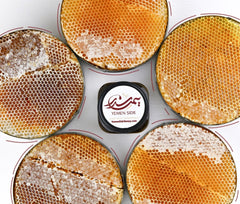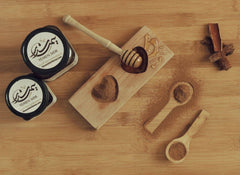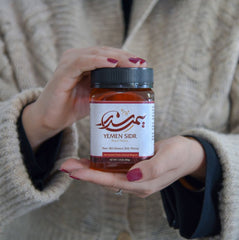The secret of the long worshiped Sidr honey lies in the story of the wondrous ancient Sidr tree (Ziziphus spina-christi), also known as Lote tree, Christ’s Thorn, Jujube or Nabkh tree. Locals have been using all of the parts of this tree to treat different types of health obstructions.
The Sidr leaves, which are rich in calcium, iron and magnesium ,have a therapeutic effect that fights many ill health conditions. Their strong anti-inflammatory and antiseptic properties are used in the making of natural wound disinfectants while the oil extracted from the resin is used for deodorants. Moreover, the leaves are strong components of a herbal shampoo that treats dandruff as well as head lice. As an anti-inflammatory agent, the Sidr leaves soothe swollen eyes, abscesses, furuncles and, on the other hand, combat obesity as well. Even when the Sidr tree is turned into ashes, it is a health benefactor which is used in the treatment of snakebites.
The fruits of the Sidr tree, whose seeds are rich in protein, have a high nutritional value that boosts energy and strengthens the immunity. The root, stem bark are also used for various medicinal purposes.
Here are several additional medicinal properties of the Sidr tree:
– a stomachic;
– an appetizer;
– an astringent;
– a cough reliever.
Plant Description:
Sidr tree is a sturdy and deep-rooted tree which has withstood the devastating floods of Eram at Ma’arib Yemen with two other trees: the Tamarisk and the Mustard Tree. The Sidr tree belongs to the “Ziziphus” family of plants. The average tree size is normally between 7-8 meters high. Its branches are soft and gray-yellowish. The flowers of the plant are yellow as well as the round Sidr fruits which turn reddish when ripe.
Habitat:
Sidr plants grow in coastal, desert, and semi-desert areas. The Sidr tree can be found in India, Pakistan, Ethiopia, Egypt, Libya, Sudan, and the in southern part of the Arabian Peninsula, The tree grows extensively in the eastern part of Yemen.
Nutritional Value:
The fruits of the Sidr tree, whose seeds are rich in protein, have a high nutritional value that boosts energy and strengthens the immunity. The leaves, on the other hand, are rich in calcium, iron, and magnesium.
Historical references:
The Sidr tree is an ancient tree, mentioned four times in the Qur’an. In Sura Saba. There, it is mentioned as an earth tree while in other Sura, it is mentioned as a paradise tree (Sidrat al-Muntaha). According to some traditions, Jesus’ crown of thorns was made from the branches of this tree.




Yes, we sell Sidr seeds in our sore for limited time!